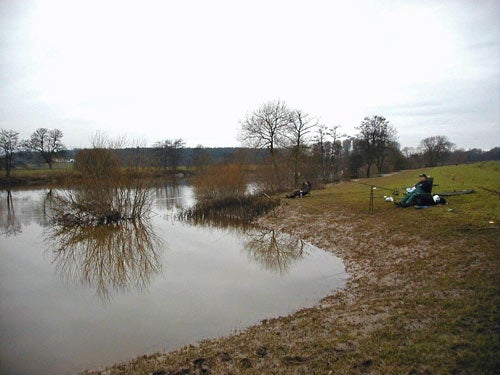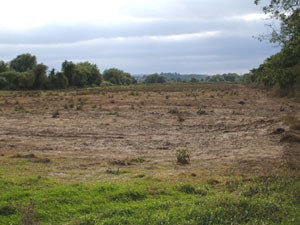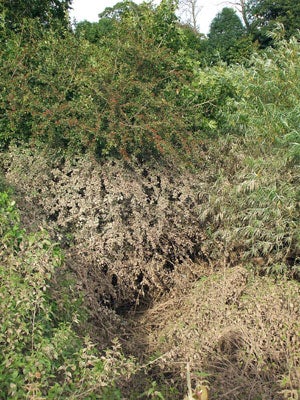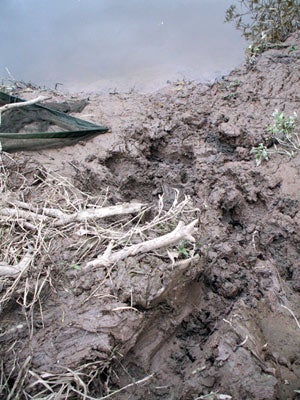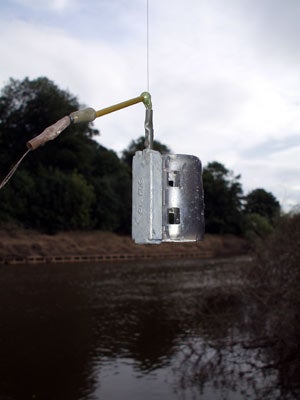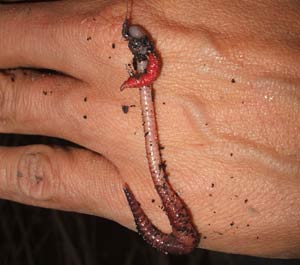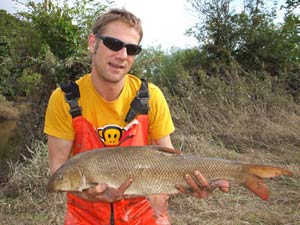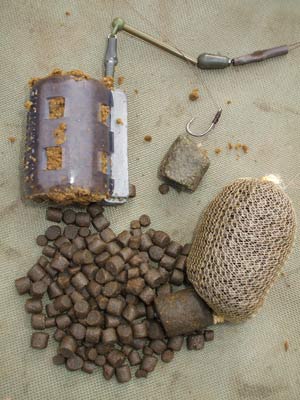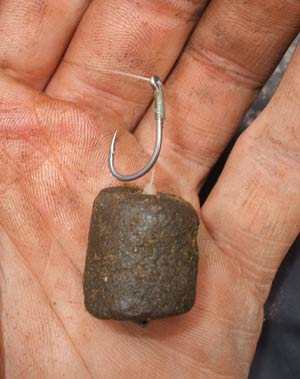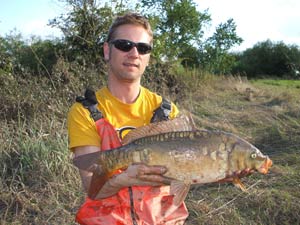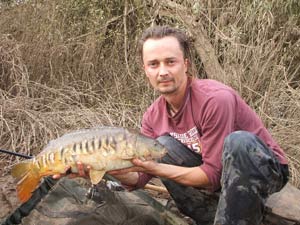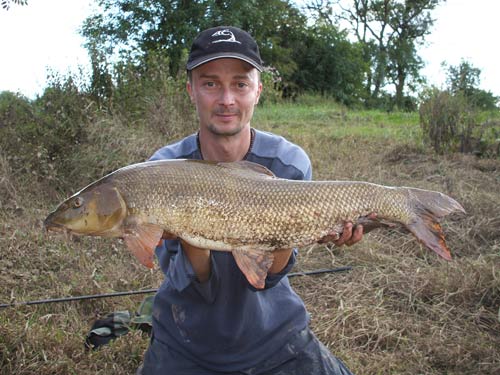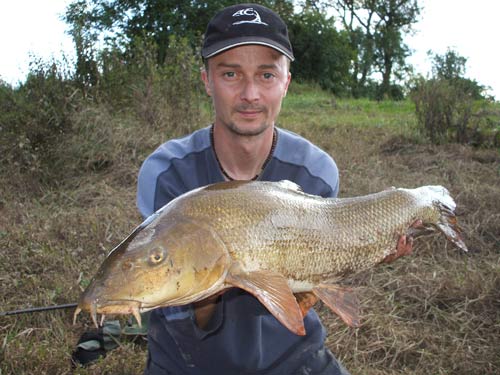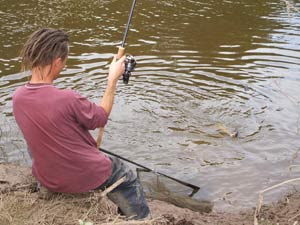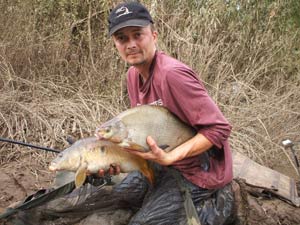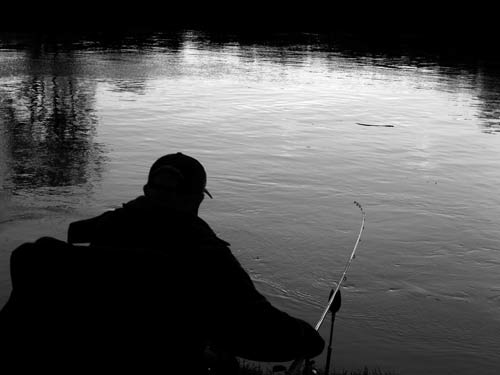Floodwater AftermathA Soggy Severn SummerThe ferocity of last summer’s floods took everyone by surprise and had disastrous consequences for many of the inhabitants of the Severn valley. As the waters finally retreated, it became evident that these catastrophic upheavals had inexorably altered the river’s ecosystem and character; Sabrina will never be quite the same again… Floody Hell in the West CountryIt seems like a bad dream now, but it was only a year ago that I was watching the daily devastation along the river’s course on Midlands Today TV, and frantically phoning my fishing buddy Jim to find out if my house was still clear of the rising water. In the end, 75 yards and a healthy gradient were all that separated my home from the relentless destructive power of the mighty Severn. I was one of the lucky ones, and my heart goes out to those who were less fortunate. For two months the floodplain remained a perpetual water-world. It was quite surreal when the rain suddenly stopped in early August, and Jim and I were soon back on the phone contemplating a well-overdue fishing trip. Sabrina had finally dropped back within her banks and was now about 6 to 7 foot above normal summer levels. After a week or so of sunshine to ‘firm up’ the saturated ground, we thought it was probably safe to get out and inspect the damage for ourselves. To be honest, we were both very apprehensive about what we’d find. If an index of our most ‘messed-up’ rivers existed; the Severn would surely be near the top. Her fishy community has had to contend with many threatening changes over the last century: from the introduction of aliens like zander and barbel, to the disappearance and decline of other stranger naturals such as salmon, shad, lamprey and giant sturgeon. Many species have played a starring role in the history of this great waterway, but as we drove to the lower river a few days later, we both agreed that the worst-case scenario would be an influx of that incorrigible freshwater prima donna, Cyprinus carpio; the very common carp. Commercial CarnageThere are a large number of commercials on the Severn floodplain and many stood no chance when the flood hit them. With such a profusion of pools boasting very high stocking densities, it was odds-on that when they went under, the fish, at their most active in the height of summer, would have made like Steve McQueen in The Great Escape and jumped the wire. I have no way of ‘guestimating’ the numbers involved, but potentially 10s, if not, 100s of 1000s of escapees. This may sound like an angler’s dream, but for Severn fishermen it is a potential nightmare. The river was at her best for years and had finally recovered for most established species after a long period of flux. Silverfish were plentiful again, the bream and barbel balance had been attained, and zander/ pike relations mostly resolved. ‘Before the floods’ seemed like the best time to be an all-rounder on this splendid river. WastelandThe sight that greeted us on the bank was straight out of the book of Revelations…
Herons, crows, ravens and seagulls had gathered in vast numbers on the scoured flood plain to pick off the last of the stranded fish. A group of crows is aptly called a murder, but with such an assembly of deadly beaks, the collective has to be a ‘massacre’. Crops and vegetation had been flattened as far as the eye could see, and everything that remained was covered in a choking layer of fine dust up to the high-water mark. The smell was overpowering as we neared the water. We are used to muddy banks on the Severn but the silt was piled high and rotting down at a rate of knots; it was like fishing on a heap of manure. The hot weather had dried the surface crust but as we approached the river’s edge, we soon appreciated the depth of the deposits as solid-looking earth gave way, and we found ourselves thigh-deep in slimy muck. With safety a major consideration, we fished in adjacent swims about 15 yards apart. Muck be a LadyI spent half an hour or so on peg improvements before tackling up. The brow of the bank was covered in dead, desiccated grass and I gathered handfuls of the brittle stems and assorted branches and debris off the high branches of neighbouring willows to create a safe-ish passage to the water’s edge where I hoped to be netting a few. Despite the unusual conditions and my fears about alien invaders, I was very optimistic that the big barbel would already be back in their familiar haunts.
My tactics would be simple. Worms are classic flood bait; millions would have been washed in over the last couple of months and as a result takes are usually very positive and the larger fish are often quickest to the bait. I chose a couple of juicy dendrobaenas (with the heads nipped off) on a size 10 Korum S3 attached to 2 foot of 10lb Terry Eustace Pro Gold below a running feeder packed with dampened 3mm pellets and small pieces of chopped worm. Within five minutes of my first cast I was completely caked in mud but supremely confident as a couple of liners indicated the presence of fish… ReEELy Annoying!Considering that 95% of the eel population has been wiped out in recent years, I was somewhat surprised to find that the other 5% had all decided to make their home in the deep hole I was casting to. After landing 8 eels in quick succession, the biggest as long as my leg and with a 2-3 inch diameter, I realised I had to change tack; worms were obviously not an option today. I cast in five or six large feeders of pellets and wandered up to Jim’s peg for a break and to talk the problem through. As I sat at the top of the bank pondering tactical manoeuvres, it became evident that Jim didn’t really have time to chew the fat as in the space of 20 minutes he landed a quality bream (6-7lb), a skimmer and a beautiful 10lb 14oz whisker on his deadly worm/ red maggot cocktail, fished below an action-packed feeder with choppies, maggots and pellets.
It was great seeing good bait choice working out so decisively for Jim, but I was somewhat frustrated that I was unable to employ the same ‘naturals’ approach in my own snig-ridden swim. After taking a few photos of his beautiful barbel, I made up my mind. I was going to go all-out with larger, less animated (and hopefully ‘eel-proof’) baits. Big Fish, Big AppetitesI had brought nearly half a kilo of worms with me in expectation of a post-flood field day, but ended up having to plumb the depths of my rucksack for alternative hookbaits. I dug out half a pack of pre-drilled 16mm halibut pellets, a bag of Sonubaits 11mm Hali-hookers, a tin of Spam, my trusty ‘2-year vintage’ glug-pot and a bottle of sardine oil. I immediately discounted the luncheon meat. The last time I had tried using Spam in an eel swim, I opted for quarter-can chunks on a size 2 Korda wide-gape hook in an effort to foil them, and still only caught wrigglers. They just whittled it down until they caught the hook! Pellets and boilies seemed the only other option, so I tackled up two rods. The first set-up was a large 60g Preston Innovations feeder on a John Roberts feeder boom running above a 16mm pellet glugged in sardine oil, and the other was primed with a generous pva stocking of chopped boilie and pellets topped with double Trigga boilie on the hair.
Before I had a chance to make a cast, Jim shouted from downstream and it was the word I’d hoped not to hear… “Carp!” Bruised, Battered… And Here to StayCarp are not a new phenomenon on the lower Severn. There was already an established population before the floods, but compared to other species they formed a tiny part of the river’s biomass. For the most part these existing residents were large specimens from double figures to forties and unless you actively targeted them they were seldom hooked, and rarely landed by accident. On the stretches we regularly fish, our average was only one a season and my best a modest 18lb 12oz.
I ran downstream to find Jim netting a small mirror of about 6lb. As Jim lifted the little fella from the water it became obvious that he had been in the wars with several bruises and a number of scales missing. We both agreed he didn’t ‘look’ like a river carp. That may sound strange but river carp always seem a lot more muscular than their stillwater cousins. Of course we could be wrong, and he could have just been a fluke capture…
At Last, A CastI made my way back to my swim grumbling under my breath about bloomin’ (!) carp, but by the time I got back to my rods, my mood had changed. I was suddenly immersed in one of those ‘fishy’ moments when you know that everything is set perfectly and you can sense big fish in your swim. Gingerly I made my way down the bank and cast my feeder into the deep hole, counting to double figures before the heavily weighted rig touched down. I looked briefly at my second rod, set up and ready to go behind me, and then chose to ignore it. I ‘knew’ I was about to catch. At that moment my feeder rod twitched slightly and instinctively I readied myself with my hand outstretched around the reel seat… A second later I was in to a decent fish and being dragged like a reluctant water skier down the slimy bank. I shouted to Jim, “Barbel! I hope!” After five adrenaline and mud-drenched minutes, I needed help dragging my boots out of the mire with a magnificent 11lb beard in the net. She was massively broad across the shoulders and could easily have gone 13lb by the late autumn. It was a relief to see Sabrina’s whiskers in such perfect nick after the major upheavals on the river. After casting in more bait I took 20 minutes off to rest my swim. Perhaps I was being pessimistic about the carp situation… Frantic TimesFrom the minute I recast, all hell broke loose in both of our swims as the fish suddenly came on the feed in earnest. It soon became clear that the first carp was no fluke. We landed some lovely barbel, bream and roach/ bream hybrids, but every other take was a common or mirror in the 5-8lb bracket. At one stage I had a double hook-up and once again Jim had to drag me back up the bank with a modest bream and a scrappy ex-commercial in the same net.
I lost count of how many alien invaders we landed between us in that first couple of short afternoon sessions, but it was more than enough to confirm our worst fears; carp (and other species) have flooded into the Severn in biblical numbers and it is going to take time to assess the ecological impact of this unprecedented invasion. 2008: A New Dawn?Since those first couple of Severn sessions last season, my view on these escapee carp has mellowed somewhat. Catching a few is a great pacifier and, after all, it’s not their fault, they’re here now! However, it is still a major worry for the future that bad environmental planning has made the mixing of populations of stillwater and river fish, and presumably disease, a seasonal inevitability.
|
Welcome!Log into your account










